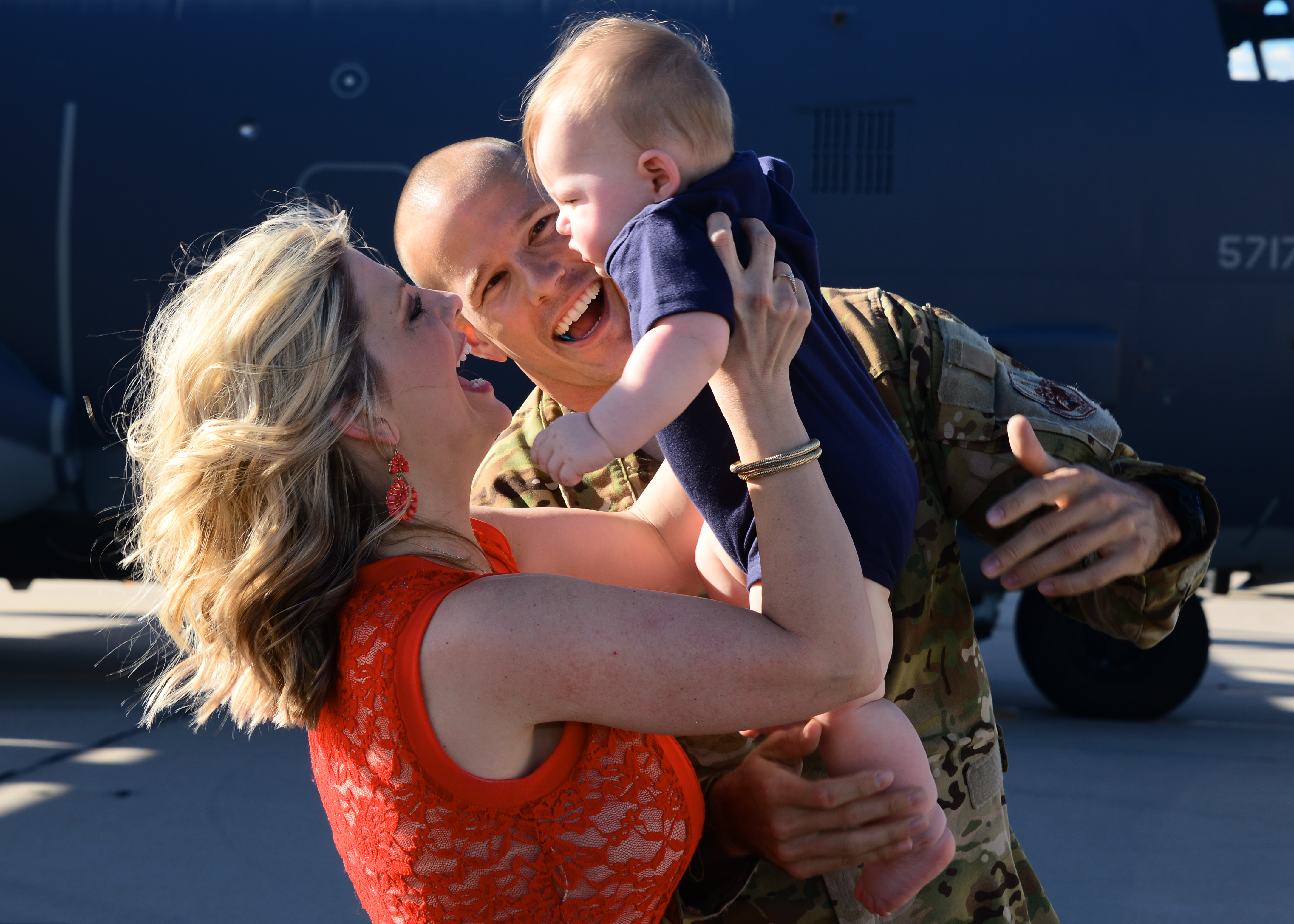An airman assigned to the 563rd Operation Support Squadron embraces his family on the flightline at Davis-Monthan AFB, Ariz., Oct. 9, 2015. Air Force photo by A1C Mya M. Crosby.
June 22, 2016: Make no mistake: deployments can cause problems for those who are not deploying, said Chief of Staff Gen. Mark Welsh in his exit interview with Air Force Magazine. Welsh will be retiring next month after 40 years of uniformed service.
Airmen are highly motivated on deployment because “they see the need, they see the mission, they know they’re making a difference,” Welsh said. These airmen leave behind jobs at their permanent bases that still must get done. Therefore, the airmen at home are frequently just as busy as they were in the war zones, and airmen cannot be expected to work on a combat-type schedule permanently. “When they go home and they have frustrations at home, it’s different. They shouldn’t have to work as hard when they’re at home as when they’re deployed,” Welsh said. “They shouldn’t feel like they have the same strains, the same resource shortages.” Airmen need a battle rhythm that includes downtime, time for family, sleep, and school.
The Air Force has for years been deploying airmen in various-size groups. Officials often discuss the effect these deployments have on the deploying airmen, but the effect on those back at home stations is rarely been a topic of conversation.
“We have deployed in pieces and parts,” Welsh continued. “You don’t pick up your Air Force wing or your group or your squadron and deploy it wholesale into a base in the Middle East … Maybe if you’re a 44-person security forces detachment you go as a chunk of people, but you don’t take the whole 300-some person squadron,” he noted. “You go to a base in Kuwait and you might find people from 90 different bases there. It’s not a big chunk of people from one unit.”
For efficiency, in a “perfect world” the Air Force would shut down a base “here in the States and send forward the entire support function from that base to run Base Y in the desert somewhere … but we can’t do that,” Welsh said. USAF “cut the manpower in some of these career fields so far over the last 25 years, that there’s not enough left at home station to train and operate properly,” the Chief said. “So training programs slow down. This is what’s affecting our long term readiness. We don’t have enough people back home to turn the sorties that the people who are back home can do the training they need to do to stay fully up on the step in terms of readiness.”
This is a direct link between USAF’s manpower shortage and its entrenched readiness problem. “This is a long fight,” Welsh said, “It’s a generational thing. We’re going to have to keep grinding on it.”
